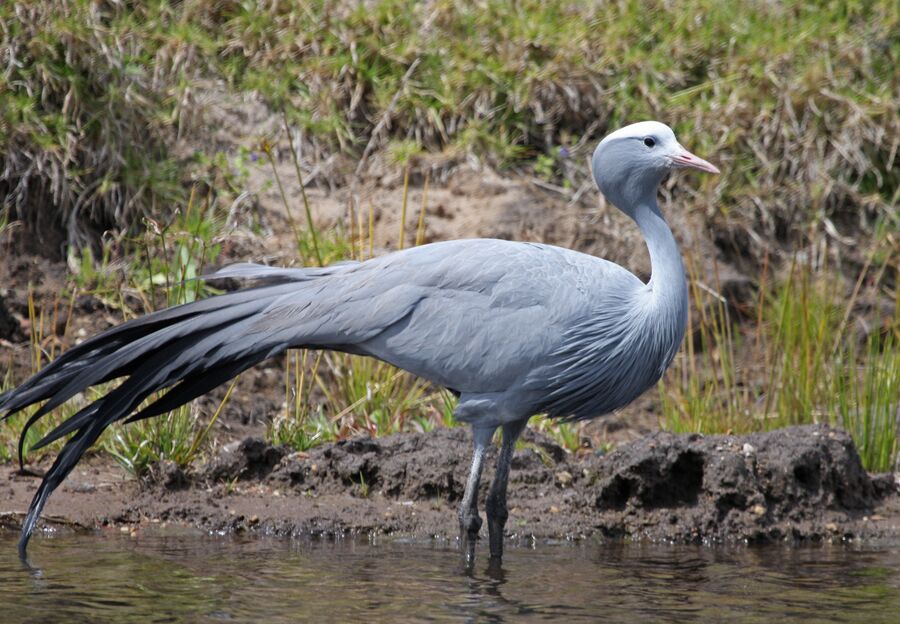
Dancing in the Fields: The Majestic Blue Crane of South Africa
South Africa's national bird, the Blue Crane, is a majestic and elegant creature that is as beautiful as it is rare. With its striking plumage and graceful movements, this bird is an icon of the South African landscape - which is why it is included on our Top 10 South African Birds for International Birders..
But the Blue Crane is not just a pretty sight, it is also a symbol of resilience and determination. Despite facing numerous threats to its survival, including habitat loss and hunting, the Blue Crane has managed to adapt and thrive in the face of adversity. In this article, we'll explore the fascinating world of the Blue Crane, from its appearance and behavior to its cultural significance and conservation status. So grab a cup of coffee and join us on a journey into the world of this remarkable bird.
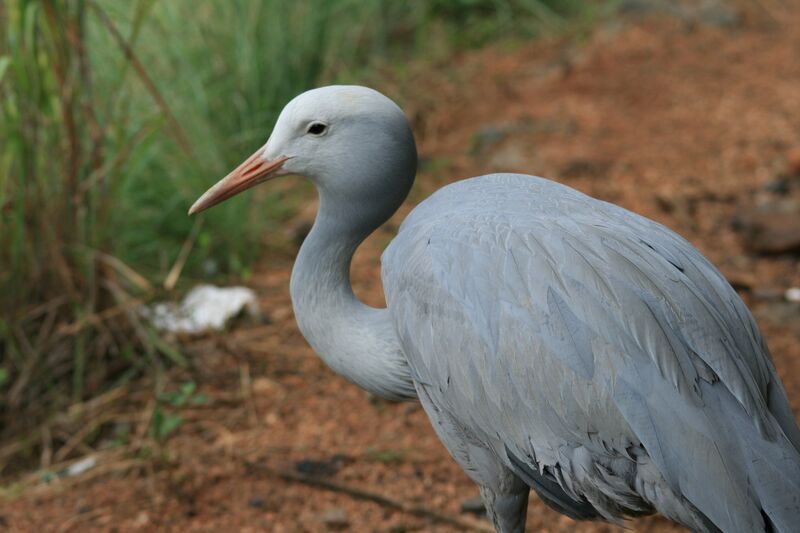
Beautiful Blue Crane - Photo Credit: Lynn Greyling
Appearance
The Blue Crane, also known as the Stanley Crane, is a large, ground-dwelling bird that can reach up to 1.3 meters in height and has a wingspan of up to 2 meters. It is easily recognizable by its blue-grey plumage, with dark primaries and secondaries that are visible in flight. The Blue Crane has a distinctive white crown, as well as a long, pointed, flesh-coloured beak. Males and females are similar in appearance, but males tend to be slightly larger than females.
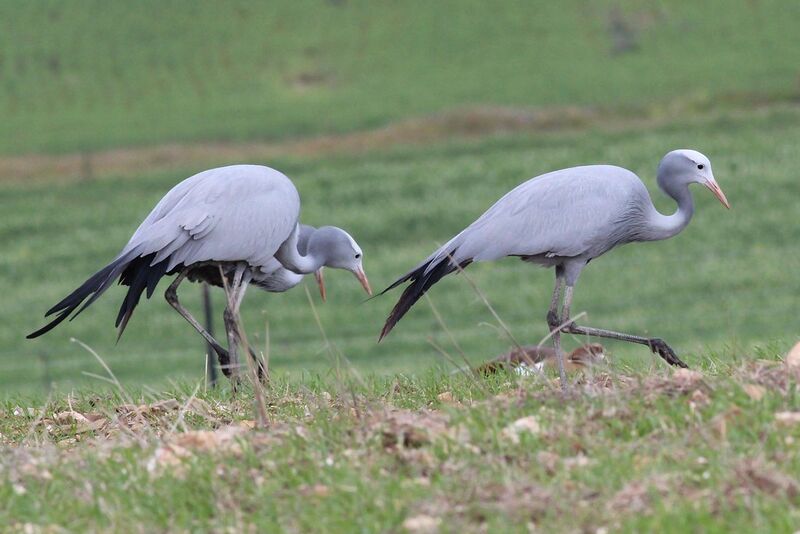
Blue Crane Pair - Photo Credit: Arthur Chapman
Interesting Behaviors
In addition to their distinctive appearance, Blue Cranes are known for their fascinating courtship rituals. During mating season, male cranes will perform elaborate dances, spreading their wings and leaping into the air while calling out to potential mates. The males will also engage in "tidbitting," a behavior where they pick up and toss small objects, such as sticks or grass, into the air while calling to the female.
Once a female has selected her mate, the pair will perform a dance together, bobbing their heads up and down while calling to each other. After mating, the female will lay two eggs in a nest built on the ground, which both parents will take turns incubating.
These courtship rituals are not only fascinating to witness, but they also play an important role in the species' survival. As Blue Crane populations continue to decline due to habitat loss and other factors, it's crucial that we continue to study and understand their behaviors in order to better protect and conserve this iconic South African bird.
Habitat and Distribution
The Blue Crane is found primarily in South Africa, particularly in the grassy plains and wetlands of the Eastern Cape, Free State, and KwaZulu-Natal provinces. They are also found in Lesotho and southern parts of Namibia. Blue Cranes prefer open grasslands and agricultural areas, but are also known to inhabit mountainous regions and fynbos. They are a migratory species and move around in response to seasonal changes.
If you're interested in seeing Blue Cranes in the wild, there are several places in South Africa where you can spot them. The Eastern Cape, particularly the grassy plains around the town of Somerset East, is a good place to start. The KwaZulu-Natal Midlands and the grasslands around Wakkerstroom in Mpumalanga are also prime areas for Blue Crane sightings. Visiting these areas during the winter months, from May to August, when the birds are most active, will increase your chances of spotting them.
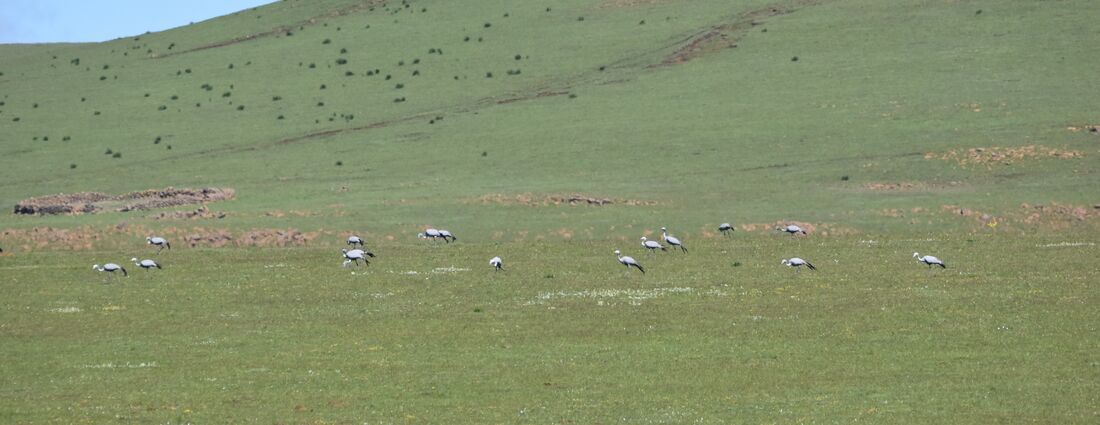
Flock of Blue Cranes
Conservation Status
Despite its iconic status, the Blue Crane is a threatened species. Habitat loss, agricultural development, and accidental poisoning are major threats to the population. The Blue Crane is listed as Vulnerable on the IUCN Red List of Threatened Species, and efforts are underway to conserve and protect the species.
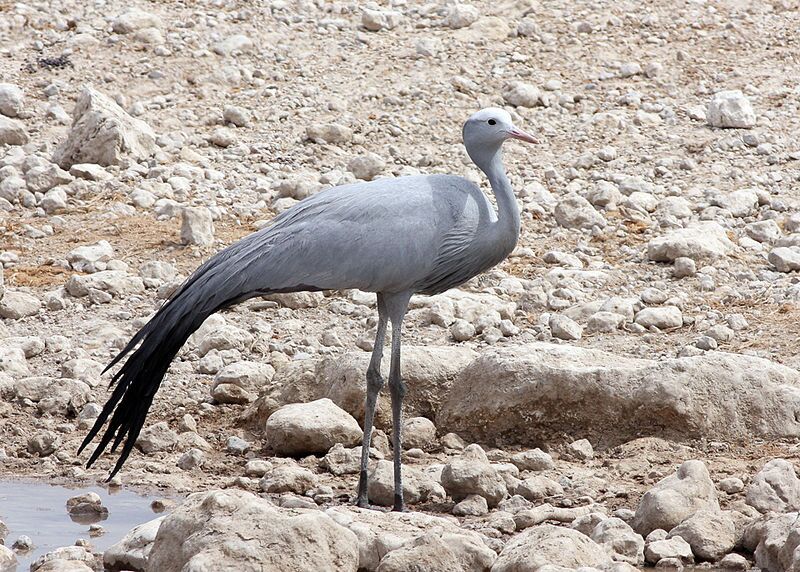
Blue Crane - Photo Credit: Ron Knight
Cultural Significance
The Blue Crane is a significant bird in South Africa, and has been designated the national bird of the country. Its cultural significance is highlighted by its presence on the five cent coin. The bird is also used as a symbol for the Endangered Wildlife Trust, a non-profit organization that works towards the conservation of endangered species.
In the Xhosa culture, the Blue Crane is considered a sacred bird, and its feathers are used in various traditional ceremonies. According to Xhosa legend, the Blue Crane is believed to possess the ability to communicate with the ancestors. The bird is also featured in various art forms, including paintings, sculptures, and embroidery.
The Blue Crane is also an important indicator species for the grassland biome. Its presence is an indicator of a healthy ecosystem, and the bird is used as a flagship species to promote conservation efforts in South Africa. As such, is also an important bird for birdwatchers and ornithologists. Its unique appearance, behavior, and vocalizations make it a popular subject for study and observation. Many birding tours in South Africa include sightings of the Blue Crane, and it is a bird that is highly sought after by birdwatchers around the world.
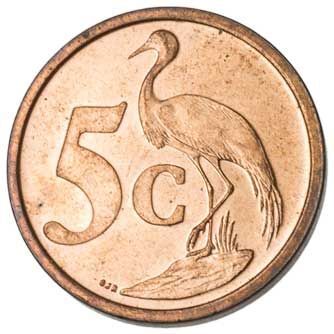
The Blue Crane is featured on the South African 5c coin
Parting Thoughts
The Blue Crane is an iconic and fascinating bird that holds a special place in the hearts of many South Africans. Its unique appearance, graceful movements, and interesting behaviors make it a favorite among birdwatchers and nature enthusiasts alike. From its courtship rituals to its role in the country's culture and economy, the blue crane is a bird that truly captures the essence of South Africa's natural and cultural heritage.
So, whether you're a seasoned birdwatcher or simply someone who appreciates the beauty of nature, the blue crane is a bird that should not be missed. So, pack your binoculars and head out to the grasslands and wetlands of South Africa where you just might catch a glimpse of this majestic bird in all its glory. With its haunting calls and elegant dance, the blue crane is a true marvel of the natural world and a symbol of South Africa's rich biodiversity.
